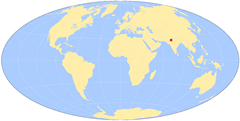
Greetings!
And here we are at the very end of my Indian expedition. I’d hoped to time this all nicely and have it finished by the end of 2014 with something new for 2015, but alas, I’m one week out as we still have the postscript in UAE to come. Oh well, no one’s perfect! But, for now, have a happy new year and I hope your 2014 was a good one and your 2015 will be even better.
Keep travelling!
Uncle Travelling Matt
Flickr album of this journey
Links to other parts of the the travelogue:
My final day in India began with some South Indian dosa and then a shopping spree in the underground market beneath Connaught Place in the heart of New Delhi which was where everyone that I had asked assured me was the best place for purchasing cheap Bollywood DVDs and a kurta (Indian pyjamas) set. I wandered the market, haggling, pausing, considering and eventually purchasing all I needed and several other items as well before emerging back into the open and continuing with my Delhi explorations.
I now went to the place that, all things considered, I should really have visited before heading anywhere else: Purana Qila. The name translates as “old fort” which is what it is; a hefty fort built by the Afghan Sher Shah who ruled between 1538 and 1545, making it older than its more illustrious neighbour upstream. That fort however, is only the latest construction at Purana Qila, for the site was inhabited long before that, way back in the mists of time in fact, for Purana Qila is where Delhi began.
Once upon a time it was called Indraprastha.
Indraprastha is not a name that will mean a lot to you if you're Western and unversed in Indian history and culture, but to any Hindu on earth, the name is familiar indeed for Indraprastha was the capital city of the Kingdom of the Pandavas in the Mahabhrata, one of Hinduism's two great epics, (the other is the Ramayana).
The Mahabhrata, of which the celebrated Bhagavad Gita is but a part, tells the story of a war between the Pandavas and the Kauravas. In the epic, Indraprastha is described as a city surrounding a palace of matchless beauty:
“… that foremost of cities looked resplendent like Bhogavati the capital of the nether kingdom decked with the Nagas. And it stood adorned with palatial mansions and numerous gates, each furnished with a couple of panels resembling the out-stretched wings of Garuda. And it was protected with gateways looking like the clouds and high as the Mandara mountains... And decked with innumerable mansions, the city became like unto Amaravati and came to be called Indraprastha like unto Indra's city. In a delightful and auspicious part of the city rose the palace of the Pandavas filled with every kind of wealth and like unto the mansion of the celestial treasurer Kuvera himself. And it looked like a mass of clouds charged with lightning... And around the city were laid out many delightful gardens adorned with numerous trees bearing both fruits and flowers... And there were various pleasure-houses, bright as mirrors, and numerous bowers of creepers, and charming and artificial hillocks, and many lakes full to the brim of crystal water, and delightful tanks fragrant with lotuses and lilies and adorned with swans and ducks and chakravakas brahminy ducks.
And there were many delicious pools overgrown with fine aquatic plants. And there were also diverse ponds of great beauty and large dimension. And, O king, the joy of the Pandavas increased from day to day, in consequence of their residence in that large kingdom that was peopled with pious men. Thus in consequence of the virtuous behaviour of Bhishma and king Dhritarashtra towards them, the Pandavas took up their abode in Khandavaprastha. Adorned with those five mighty warriors, each equal unto Indra himself, that foremost of cities looked like Bhogavati the capital of the nether kingdom adorned with the Nagas.”[1]
The crowds, mothers and fathers with excited children brandishing balloons and ice creams, were thick on the road as I approached the place where Delhi began, but unlike me they all turned right prior to the fort's entrance, choosing the delights of the city zoo over ancient history. Still, that made for a quieter place for me to explore which I duly did, wandering around the ruined mosque and walls and the building in which the great Mughal Emperor Humayun tripped and fell down the stairs to his death.
But as for ancient Indraprastha, there was, alas, little to see beyond a large hole left by the archaeologists. Still, I should not have been surprised, for in 'City of Djinns' Dalrymple talks of his visit to the site with Professor B. B. Lal, the archaeologist who undertook the dig and it doesn't raise expectations. In it he asks Lal about the fable gates and towers:
“'You won't find many palaces in the PGW[2] layers,' said Professor Lal.
'What do you mean? In the Mahabhrata...'
'Poetic licence,' said the professor. 'The archaeological evidence shows that the Painted Grey Ware culture was really fairly primitive – basically it was a rural, pastoral economy. At Hastinapura they had iron and copper implements, a few tools made of bone. Some glass ornaments, good wheel-turned pottery...'
'But the buildings?' I asked. 'What would the great hall of Indraprastha have been like?'
'If it ever existed it would have been wattle and daub.'
'Wattle and daub?'
'You get some mud-brick walls, earthen ramparts, the odd structure of kiln-fired bricks, but generally speaking PGW structures are almost always wattle and daub.'
'Any use of marble?'
The professor shook his head: 'Stone is very rare in this area and they didn't have the resources to move it very far. To date no PGW layer has come up with any stone buildings.'
'What about paintings? The trompe l'oeil which fooled Duryodhana?'
'No – nothing like that. Just monochrome geometric and floral decoration on pottery. No human figures. The material culture described in the text is that of the fourth century AD, not the ninth century BC.'
The professor turned and began walking back to the Rest House. 'The Indraprastha of the Mahabhrata,' he said, 'was basically created by the pen of a poet.'”[3]
Still, like all legends and myths, it was amazing to think that there was some truth in it all and that I was stood where it had actually happened. It was much nicer though to lie down on the grass under the shade of a tree and doze away half an hour or so of Indian afternoon.
Since Emperor Humayun had died at Purana Qila, it was perhaps only fitting that my next stop should be his tomb in the south-east of the city, an area which prior to the 20th century had been open countryside. Humayun was the Second Mughal Emperor and the father of Akbar whom we've met already and by now the Mughal jigsaw was beginning to fall into place for me. He was referred to as Insan-i-Kamil (The Perfect Man) by his people due to his peaceful personality and non-provocative methods, and it now made more sense as to where Akbar got his noble character from. More than that, the father also gives us a hint as to his son's religious inclinations, for his tomb was built in that place so as to be near to the Dargah of Hazrat Nizamuddin. Like Akbar, Humayun greatly revered the Chisti Order and he thought that by being buried near to one of their greatest saints, some of the blessings would rub off onto him.
Humayun's Tomb is magnificent, a red sandstone mini Taj Mahal that I enjoyed wandering around despite still being blasé about such structures having seen quite a few of them over the previous week or so. I changed into the kurta that I'd bought in the market and found it much cooler and more comfortable and then in the gardens I made a video of my Delhi impressions. That done, I then made my way next-door to fulfil a promise to myself that I'd made passing through en route to Agra. I would return to the Dargah of Hazrat Nizamuddin to savour it fully as it deserved.
I walked to the dargah, across the busy Mathura Road which separates it from the park surrounding the tomb and then down the narrow alleyways that I'd negotiated before. At the end of them it was there, far more humble and hemmed in than the grave that I'd just come from yet possessing an atmosphere and an energy that its illustrious neighbour – and the far more sumptuous Taj in Agra – simply failed to muster. This place would win few architectural awards yet it was the most moving that I'd visited in all Delhi and the right place to close off my Indian experience. After paying homage at the tomb, I sat on one of the steps and drank it all in: the holiness, the Qawali singers chanting in the courtyard, the birds circling overhead, the sights, sounds and smells of Incredible India.
Yes indeed, for cheesy as the slogan undoubtedly is, I had found India incredible and I was glad that I'd come. True, I'd struggled for the first day or two, but after that I'd adjusted and I'd enjoyed it for India is like nowhere else on earth that I have been to. The Taj Mahal, Red Fort, Agra Fort, the palaces of Jaipur and the ruins of Fatepur Sikhri, all had been magnificent, world-class monuments, and yet they were not what I would remember; they were not what was making me plan a second trip even before my first had ended. No, what was so incredible for me (apart from the food!) were the places like the one where I was now sat, the holy places. The India that I keep recalling sat here in my Stoke-on-Trent home is the India of the Sufi dargahs, the ghats of Pushkar and the other-worldly ambience of the Golden Temple. If I visit again, those are the places that I shall be seeking out. But that is for next time; as for this trip, I had but one more stop to make...
The streets around Chandni Chowk were the same chaotic hell that they had been on that disorientating first night in the country and I was worried that I would be late. But my cyclo wallah managed to drop me off at the foot of the great staircase leading up to the Jama Masjid just as the azan was sounding for Maghrib prayer.
Stood at the top of those steps, as the azan drifted across the courtyard and the sun was setting was a truly incredible experience. India's largest mosque, a Mughal masterpiece commissioned by Shah Jahan and one of the most sublime Islamic buildings on earth, it truly was a fitting place to end an incredible trip. My only regret was that it hadn't been longer but then, as the Muslims would say, I'll be back... Insha'Allah.
[1] Mahabhrata: Adi Parva: Section 208. Available online at: http://ancientvoice.wikidot.com/src-mbh-01:section-208
[2] PGW = Painted Grey Ware Culture; an Iron Age culture of the Gangetic Plain lasting from c. 1,200 BC to c. 600 BC.
[3] City of Djinns, p.331
Technorati Tags: uncle travelling matt,travel,blog,matt pointon,delhi,incredible india,india,mahabhrata,indrapashta,purana qila,hazrat nizamuddin,dargah,sufism,sufi,chisti,chandni chowk,jama masjid,shah jahan,islam,hinduism,hindu,humayun's tomb,mughal
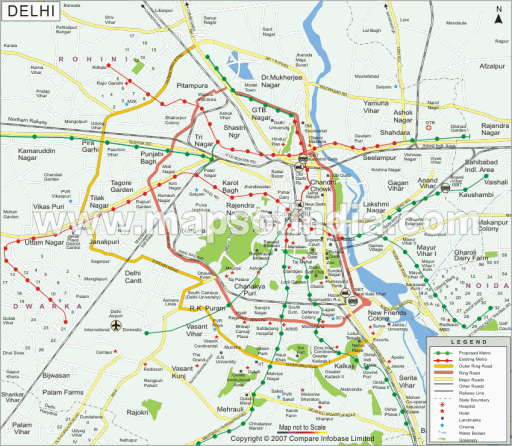
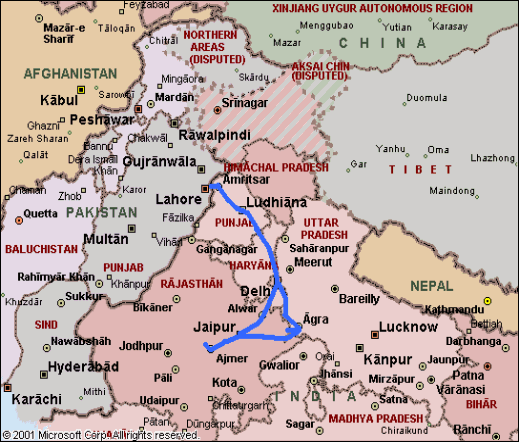
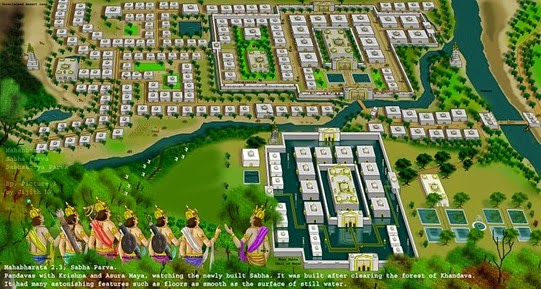
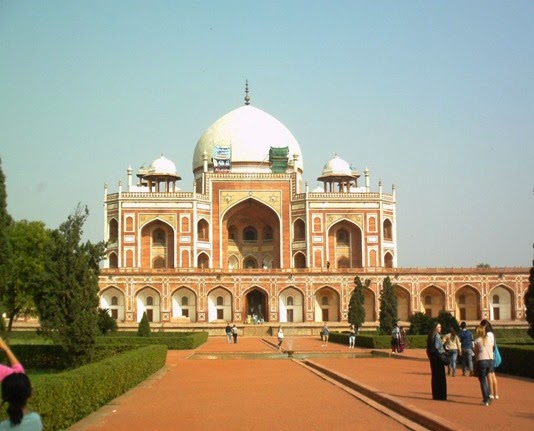
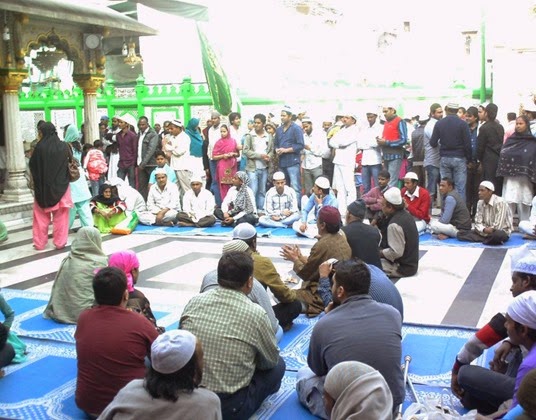
I always like to travel and thanks for this information's because I also visit this place such a lovely place and i took tour package from lotus india Holiday and they provide such an outstanding facility at a reasonable price. I would like to suggest for visit Best Travel Agent in Delhi
ReplyDeleteand enjoy your vacation.
This comment has been removed by the author.
ReplyDelete